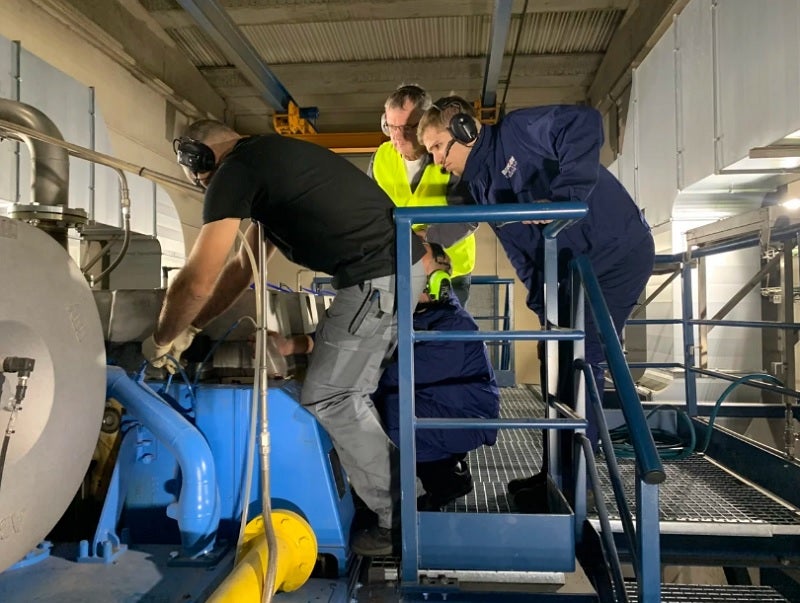
The first installation of mtu engines running on 100% hydrogen is already planned for the enerPort II lighthouse project in the German inland port of Duisburg, as part of the development of a climate-neutral energy supply for a new container terminal.
Andrea Prospero, an engineer at Rolls-Royce responsible for the development of the hydrogen engine, said: “We are very pleased with the rapid progress. The very low engine emissions are well below the strict EU limits, no exhaust gas after treatment is required.”
Due to the different combustion behaviour of hydrogen compared to natural gas, some engine components including fuel injection, turbocharging, piston design and control, were modified in the test engine. However, by using proven technologies within the Power Systems’ portfolio, such as mtu turbochargers, injection valves, and engine electronics and control, the development of the engine to use hydrogen was advanced quickly and efficiently, says Rolls-Royce.
Duisport, one of the world’s largest inland ports, is working with several partners to build a hydrogen-based supply network for its new terminal, ready for operation in 2024. In the future, most of the electricity required by the port itself will be generated directly on-site from hydrogen in a CO2-neutral manner. The power will come from two CHP plants with mtu Series 4000 hydrogen engines (total installed capacity 2 MW) as well as three mtu fuel cell systems (total installed capacity 1.5 MW).
“World first” H2 tests in the USA
In the USA, testing of hydrogen blended fuel carried out by Wärtsilä in collaboration with WEC Energy Group, EPRI and Burns & McDonnell has been concluded. The tests were carried out at WEC Energy Group’s 55 MW A.J. Mihm power plant in Michigan, USA using an unmodified 18 MW Wärtsilä 50SG engine. The hydrogen and hydrogen blending skid was provided by Certarus Ltd.
Throughout the testing period, the Wärtsilä engine continued to supply power to the grid. According to Wärtsilä, this is the largest internal combustion engine ever to operate continuously on a hydrogen fuel blend, and this, therefore, constitutes a world-first achievement. The results are said to be “in line with all expectations. The full report with details will be published early in 2023.
Wärtsilä is actively carrying out engine tests with 100% hydrogen fuel at its engine laboratory in Vaasa, Finland. Results thus far have been encouraging, and the company expects to have an engine and power plant concept for operation on pure hydrogen available by 2025.
Bergen on trial
Meanwhile, trials of a Bergen gas engine running on a blend of green hydrogen and natural gas have been successfully completed at Viscofan, the international meat products processor, at its Ca´seda plant in northern Spain. It is the first time a Bergen engine has run with hydrogen in a full-scale industrial application. The trial confirmed laboratory tests suggesting that the engine would perform normally in real-life conditions.
In recent years Viscofan has renewed its co-generation installation in Ca´seda with the latest Bergen engine technology, which is capable of running on natural gas and hydrogen mixtures of various percentages.
The objective of the Ca´seda trials was to measure the efficiency and assess the reliability of the engines in real-time continuous use.
Fuel blending was carried out up to 15% hydrogen and 85% natural gas in a type B36:45L6AG Bergen engine producing 5.5 MW of output in combined heat and power configuration.
The green hydrogen used was provided by Electroqui´micas de Hernani with the support of Nippon Gases, which was in charge of the transport and supply of gas. Two hydrogen semi-trailers were installed temporarily, each with an approximate capacity of 4000 Nm3 of compressed hydrogen at 200 bar, with hydrogen flow rates up to 400 Nm3/h.
This article also appeared in Modern Power Systems magazine.





